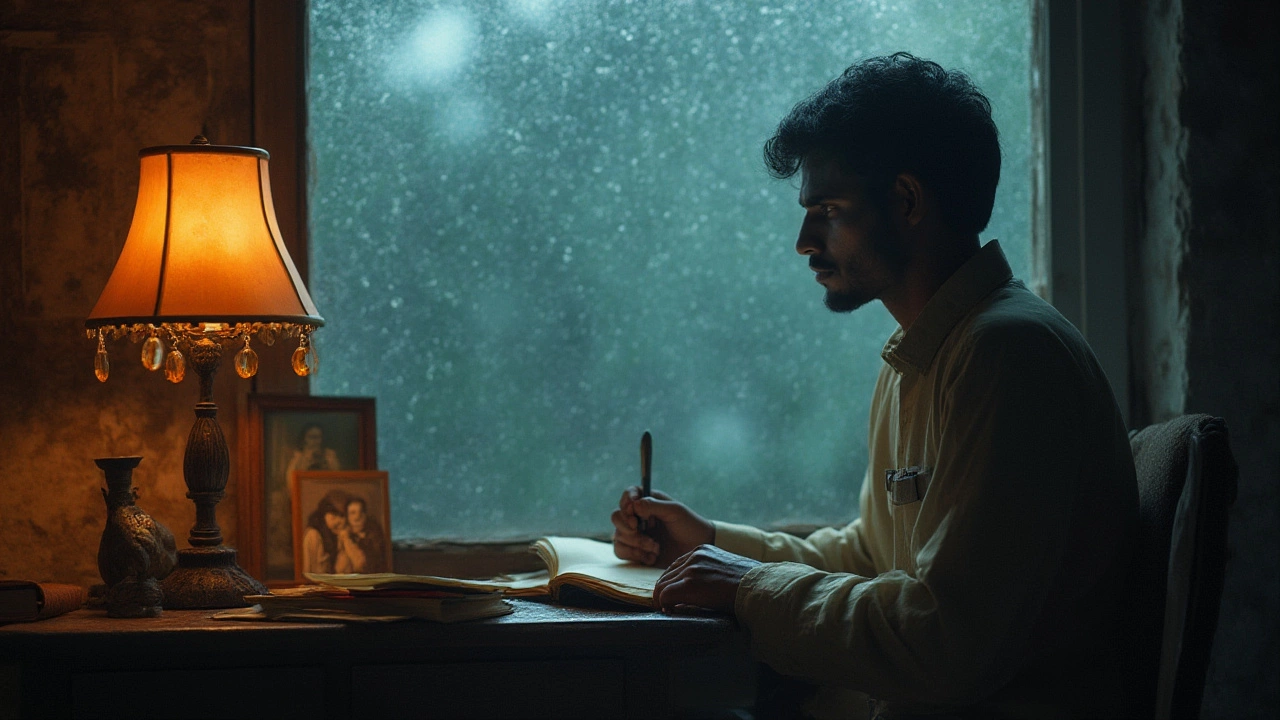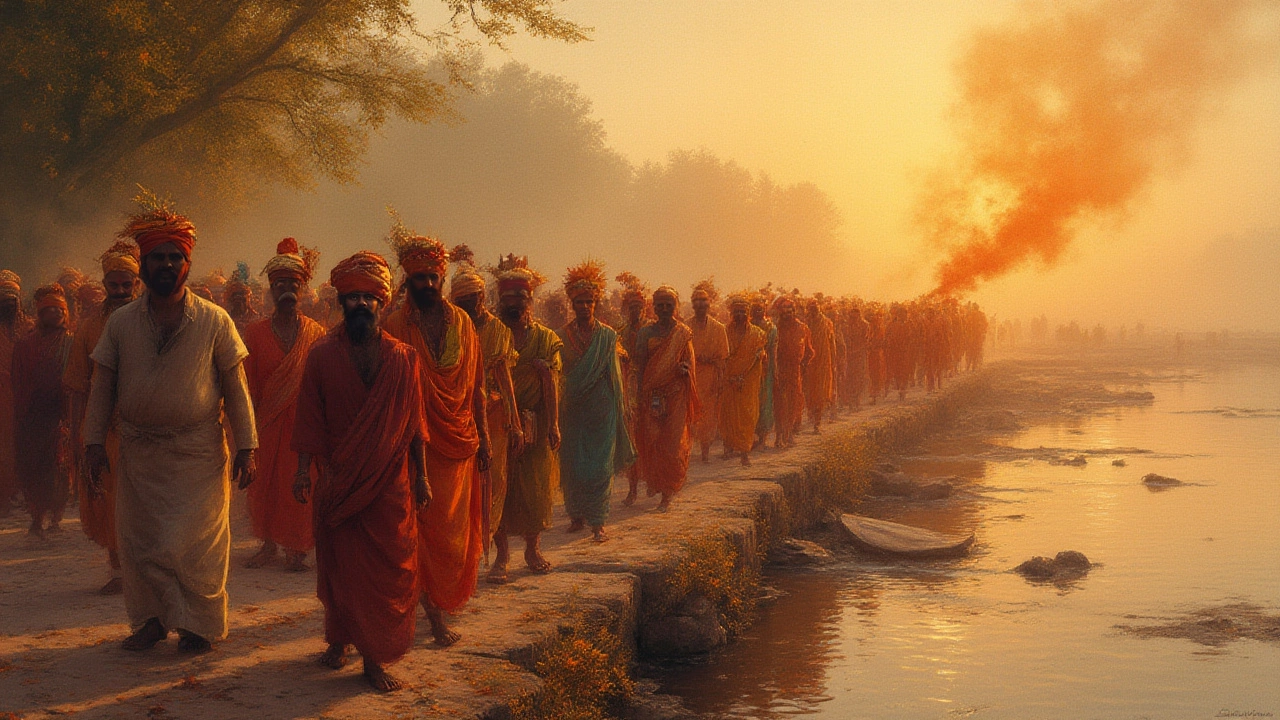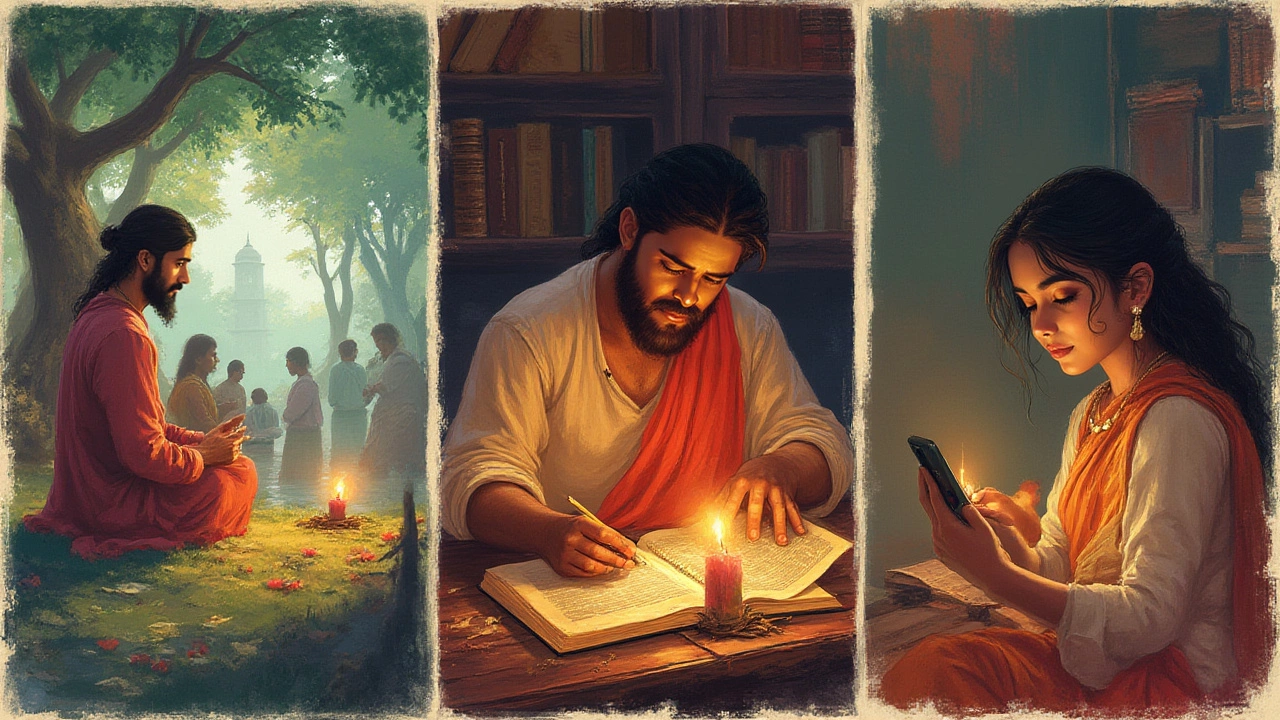
Picture a poem that feels like a rainy day, the kind that gets under your skin and lingers in your mind long after you’ve finished reading it. There’s something magnetic about poems that capture sadness, longing, or loss so well you can’t help but feel a little heavier—and a little more alive—afterward. Ever find yourself wondering what these deeply sad or pensive poems are actually called? Turns out, there’s a long, fascinating history behind them, and they go by more than one name. Let’s walk through what makes a poem truly melancholy and the words we use for these unforgettable verses.
The Many Names of Melancholy Poems
Melancholy poems go by several names, each hinting at a slightly different shade of sadness. If you want to sound fancy, drop the word “elegy” into the conversation. An elegy is probably the most famous term for a poetic expression of grief, especially one written for someone who has died. There’s also the “dirge,” which may sound a bit medieval, but it’s really just a short song or poem of lamentation, usually intended to be sung at funerals. And then there’s the “threnody,” which feels almost musical—it’s tied to songs of mourning, and the word gets its roots from ancient Greek culture. While these three—elegy, dirge, and threnody—cover most bases, melancholy poetry can also lurk in places you wouldn’t expect. For example, much of Emily Dickinson’s poetry dances around loss and sadness, but she rarely labels her work explicitly. Another classic example is the “threnody,” which appears less often in English poetry but pops up in big ways, like Ralph Waldo Emerson’s poem of the same name, written for his young son. There’s also the more generic label, “lament,” which is just what it sounds like: an outpouring of sorrow or regret, often in response to heartbreak, death, or the slow ache of lost time.
But melancholy poetry isn’t only about mourning someone. Think of poems about lost loves, fading youth, or homesickness—those poems fit the bill. Even haikus can be melancholy, despite their brevity. In Japanese culture, the word “mono no aware” captures the bittersweet feeling of impermanence, a theme that shows up in classic haikus and tanka poems. Traditionally, melancholy poems don’t always demand tears; sometimes, they’re quiet and gentle, more about nostalgia than deep grief. As you can see, naming these poems gets tricky. “Sad poetry” is probably the most straightforward label, but if you want to impress someone or search for classic examples, “elegy” is your go-to word for the most formal type of melancholy verse—and the one you’re most likely to find in a literature class or anthology.
Where Melancholy Poetry Began: A Brief History
People have been writing sad poetry literally for thousands of years, but things really took off in Ancient Greece and Rome. Hesiod and Homer wrote lamentations for fallen heroes, and poets like Ovid filled whole books with personal grief in exile. The Greeks used “threnos” and “kommos” for poems sung at funerals or public mourning ceremonies, and Romans introduced the world to the Latin “elegia,” which originally described a poem written in a certain meter, but over time, it became about expressing personal sorrow for lost loved ones. The elegy never really went out of style, even as poetry changed forms and languages. Fast forward to English literature, and you stumble across Thomas Gray’s “Elegy Written in a Country Churchyard” from 1751, still one of the most famous English-language elegies ever. Gray’s poem became so synonymous with mourning that people started using “elegy” to describe almost any poem marked by sadness or reflection. In the centuries that followed, poets poured their grief over personal tragedy or public loss into their work: John Milton’s “Lycidas” (written for a drowned friend), Percy Bysshe Shelley’s “Adonais” (written for fellow poet John Keats), and Walt Whitman’s “When Lilacs Last in the Dooryard Bloom’d” (mourning Abraham Lincoln).
It’s not just the English-speaking world that embraces sad poetry. In Persian literature, poets like Hafez and Rumi wrote heartbreaking ghazals about lost love and spiritual longing. In Urdu, ghazals became a whole genre for trying to express the subtle pain of love and distance. In Japanese poetry, “waka” and “tanka” both often explore melancholy, especially with themes of seasons changing, departures, or yearning. Even folk cultures—Celtic laments, African elegies, and Russian ballads—have special words for songs and poems meant to honor the dead or express communal grief. If you ever wondered why so many countries have national poems or songs about loss, now you know: it’s a universal urge. And as long as we’ve had poetry, people have been pouring their melancholy onto the page.

How to Recognize a Melancholy Poem
You don’t need a PhD in literature to spot a poem dripping with melancholy, but there are some tell-tale signs. First, look for the topic: is the poet talking about someone (or something) lost? Do they focus on grief, heartbreak, mourning, nostalgia, or longing? That’s a big one—the most powerful melancholy poems use subtle images and metaphors. Think of the slow drip of autumn rain or a faded photograph; those images say more than a flat-out statement about sadness ever could. Many melancholy poems open with a direct address to the lost person, a common device in elegies. So if you see a poem that starts with “Oh my friend” or “Mother, you are gone,” you might be holding an elegy or a lament. Style-wise, melancholy poems aren’t always long. Some are brutally short, like a haiku about cherry blossoms falling, echoing the fleetingness of life. Others are epic, like Milton’s “Lycidas.” Rhyme and rhythm can vary—a dirge might be set to music with simple language, while an elegy often uses more formal, careful lines. Tone is tricky. It isn’t just “sad.” The most memorable melancholy poetry lingers in the quiet places: the empty chair at the dinner table, the scent left behind, the words unsaid. Think of William Wordsworth’s “Lines Composed a Few Miles Above Tintern Abbey,” filled with bittersweet reflections and the ache of time slipping away.
Some modern poems go for stark honesty rather than ornate language. For instance, Mary Oliver often writes about the grief of losing a beloved dog or the briefness of summer days, using words anyone can understand. But beneath the surface, the sense of longing is unmistakable. If you want to know if a poem is melancholy, ask yourself: did you feel a pang reading it? Did it stick in your memory because of something it lost, not gained? That, above all else, is the mark of a *melancholy poem*—a work created to capture the shadow that follows us all. It doesn’t always have to be about loss; some melancholy poems focus on regret, faded dreams, or even the beauty found in sadness itself. The more specific the details, the more universal the feeling tends to be; that’s why you might cry at a poem about a stranger’s heartbreak. Even if you’ve never met them, their loss feels like your own, for a moment.
Famous Examples of Melancholy Poetry
Want to see these forms in action? Check out a few classics that make pretty much every list of melancholic masterpieces. “Do Not Go Gentle into That Good Night” by Dylan Thomas is technically a villanelle, but it’s also a plea against death—every line is a punch to the gut. W.H. Auden’s “Funeral Blues” (the “Stop all the clocks” poem) became a modern anthem for private grief after being featured in the film “Four Weddings and a Funeral.” In Hindi, Harivansh Rai Bachchan’s poem “Agneepath” captures the ache of struggle and the pain of perseverance, while in Persian, Hafez’s ghazals turn heartbreak into art. Even rock bands get in on the action: poets like Patti Smith borrow the language of sad poetry to give music emotional depth.
If you want a quick whirlwind tour, here are a handful of must-read examples:
- “Elegy Written in a Country Churchyard” by Thomas Gray (the blueprint for English elegy)
- “Lycidas” by John Milton (overflows with classical references and sorrow)
- “Adonais” by Percy Bysshe Shelley (grieving the loss of a fellow poet)
- “When Lilacs Last in the Dooryard Bloom’d” by Walt Whitman (a musical, sprawling farewell)
- “Annabel Lee” by Edgar Allan Poe (mixes love with loss in haunting lines)
Many contemporary poets take the tradition in new directions. Ocean Vuong’s work aches with the loss of home and family, often told in plain, direct language. Ada Limón crafts poems about grief that echo with life’s small sorrows—lost animals, old lovers, the passage of time. Rilke’s “Duino Elegies” aren’t easy reads, but their meditations on death, beauty, and longing make them classics. Want another tip? Next time you see the term “elegiac” attached to a poem in a bookshop or review, that’s the critic’s way of hinting that you’re about to dive into melancholy territory.

Tips for Writing and Reading Melancholy Poems
If melancholy poems call to you, either as a reader or a writer, you’re in good company. To write a strong melancholy poem, start with your own experiences of loss or longing—big or small. Some of the best sad poems are about very ordinary things: the end of summer, saying goodbye to a friend, or leaving home for the first time. You don’t need grand language. The closer you get to honest detail, the more compelling the poem will be. Try listing specific things you miss or fear losing; the texture of a loved one’s sweater, the way sunlight hits the kitchen after everyone’s left. Use imagery that stirs the senses—smell, sound, touch—since melancholy isn’t just an idea, but something you feel deep in your body when you reread old letters or visit forgotten places.
Reading melancholy poetry is an art in itself. Don’t rush through it. Sad poems usually reward a slow, careful read. Try reading out loud. The sound of the words can add an extra layer of emotion, especially with older forms like dirges or elegies. Jot down lines or images that strike you—they often stay with you for days after. Notice what the poet leaves unsaid; sometimes, the most powerful moments come in the spaces or breaks between stanzas. If you’re choosing poetry for a ceremony or personal reflection, match the tone to your true feelings. Sometimes the classic funeral elegy works best, but at other times, a simple piece of modern free verse feels more honest. For those exploring melancholy from different cultures, try searching for “lament” or “elegy” in translation. You’ll discover that these poems can sound completely different depending on where—and when—they were written, but the ache inside them feels familiar no matter the language.
Finally, don’t be afraid of the heaviness. Melancholy poems remind us we’re not alone in our longing or sorrow. Whether you lean on ancient elegies or write your own lines in a journal at 2 a.m., these poems offer shelter and understanding, proof that in every era, someone else has felt the same way you do—and found the words to say it.